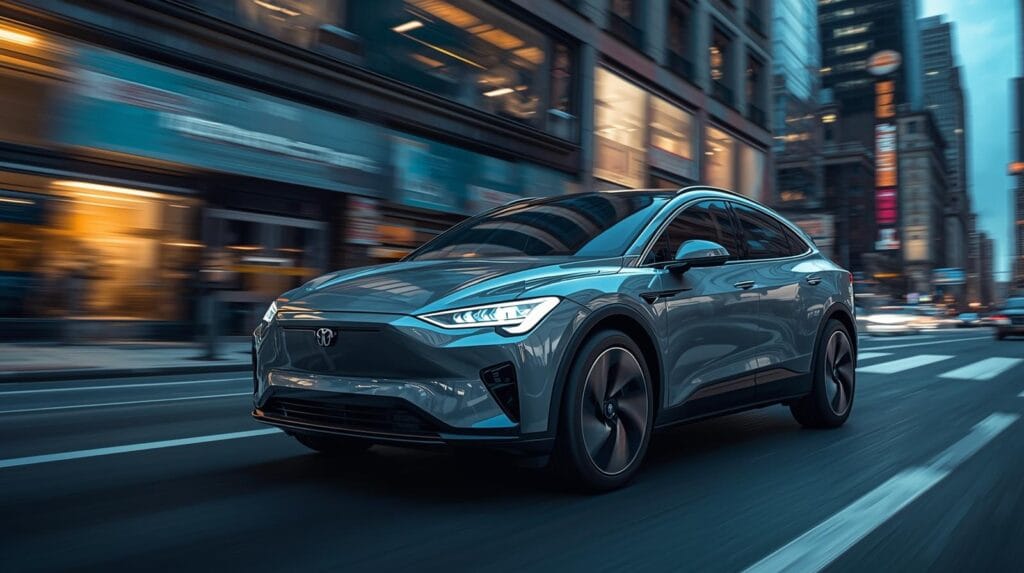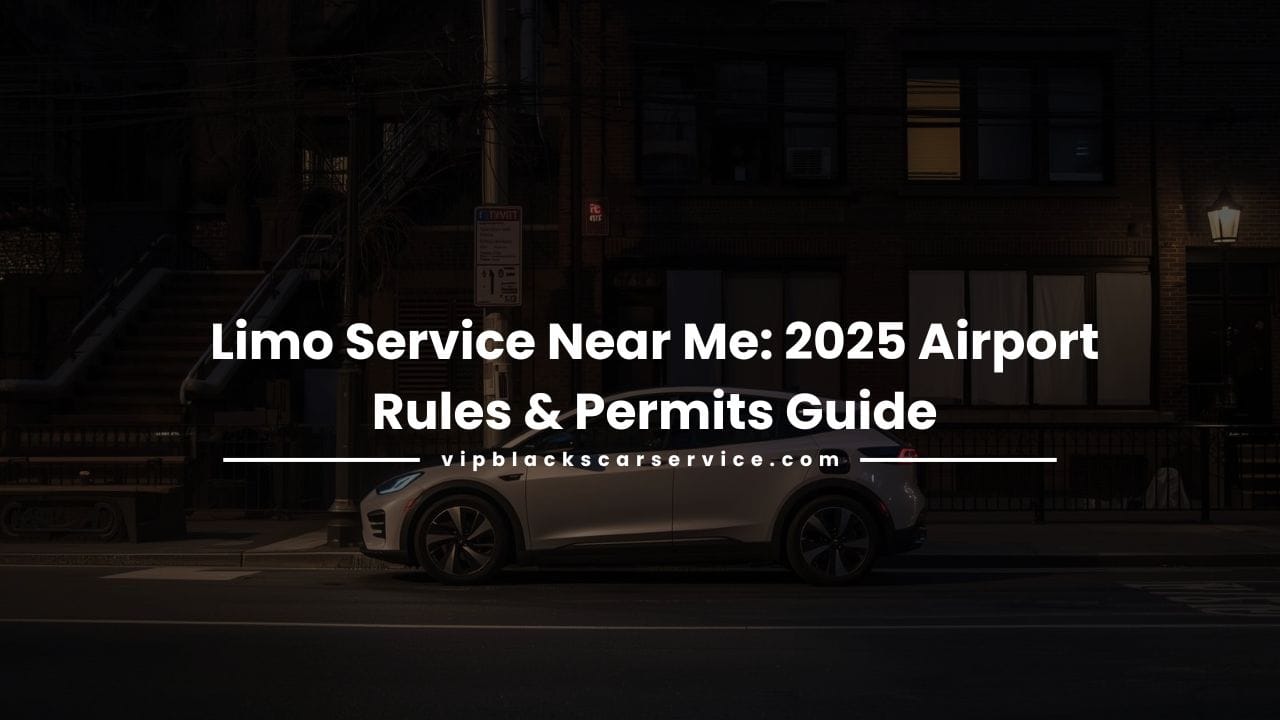Inside the Changing Rulebook of U.S. Airport Ride Services
A complete guide for chauffeurs, limo operators, and travelers navigating new airport transportation realities.
The Airport Curb Is Changing ~ and Fast
If you’ve ever searched for a limo service near me to catch a flight or schedule a corporate airport transfer, you’ve probably noticed how the airport curb has changed, and fast. In 2025, the U.S. airport curbside has become one of the most tightly controlled and competitive zones in ground transportation. What used to be a relatively simple pickup area is now a high-regulation environment shaped by evolving airport policies, FMCSA safety rules, digital permit systems, and stricter accessibility enforcement under the ADA.
For chauffeurs, limousine operators, and travelers alike, this shift represents more than a few procedural tweaks, it’s a full transformation of how professional transportation interacts with airports. As the latest trends in the limo service industry continue to reshape expectations, operators must adapt not only to client demands but also to evolving airport regulations.
Whether you’re running executive black-car transfers to JFK, managing chauffeur schedules at LAX, or coordinating airport limo service near me in regional hubs like Bradley or Newark, understanding this new regulatory landscape is essential. The cost of missing a compliance update isn’t just a fine, it’s a potential hit to your brand reputation, your airport access privileges, and the client trust you’ve built over years of reliable service.
In this guide, we’ll break down the latest federal, state, and airport-level updates, from digital permitting and emissions standards to real-time curbside management and ADA accessibility rules, helping operators and drivers navigate the fast-changing realities of airport transportation in 2025, and explore how eco-friendly airport limo service is becoming the new industry benchmark.
Why Airport Ground Transport Matters More Than Ever
If you’ve ever searched for a limo service near me before a flight, you’ve probably felt that unstated tension: can the ride you booked actually reach the curb legally, on time, and without surprises? Millions of U.S. travelers depend daily on ground transport. Airports routinely handle over 2.5 million passengers per day across the nation, and each arrival must be met with safe, regulated transit out of the terminal.
As post-pandemic air travel rebounded, demand for escorted transfers, luxury limos, private shuttles, executive vans, surged. Business executives, high-net-worth clients, and discerning travelers are returning in force. But the boom also invited a darker side: unlicensed operators, rideshare gimmicks, curbside scams, and gray-market “airport pickups” that mimic legitimate services.
In Connecticut alone, a man was recently arrested for operating an unpermitted limousine service that defrauded customers seeking reliable airport pickup. Such incidents heighten regulatory scrutiny, turning what once was tolerated into a compliance red zone.
Now more than ever, ground transportation sits at the intersection of customer expectation, airport control, and law enforcement. As travelers increasingly Google “limo service near me” before their flights, legitimate operators must navigate a thicket of rules, risks, and reputational stakes.

Categories of Airport Ground Transportation
Not every ride is created equal under the law. Recognizing which class your service falls into is critical, the rules, oversight, and liabilities differ profoundly.
| Type | Typical Use Case | Permitting / Regulation | Key Constraints |
|---|---|---|---|
| Limousines / Black-Car Services | High-end, prearranged airport transfers, VIPs, executives | Airport-issued limo or ground-transport permit; pre-booking required | Must list vehicles and drivers with airport authority; curb-time limits; insurance burden |
| Rideshare / TNCs (Uber / Lyft) | On-demand, app-based pickups from curb zones | Separate digital queue or staging permit; remote waiting zones | Often forbidden inside terminals; may use remote lots |
| Hotel / Courtesy Vans / Shared Shuttles | Hotel transfers, shared ride services | Often concessionaires, with contract obligations | Must meet ADA, inspection, operational schedules |
| Charter Buses / Group Vans | Large groups, interstate travel | FMCSA oversight for interstate routes | Hours-of-service, inspection, driver qualifications |
Each category triggers a unique regulatory domain, federal, state, and airport-level. Misclassifying or misapplying yourself to the wrong bucket is a recipe for enforcement trouble.
Permit & Access Rules ~ The Heart of Airport Compliance
Touching the terminal curb is not a laissez-faire right, it’s a privilege earned via compliance. Here are examples of major U.S. airports and their permit regimes:
- LAX (Los Angeles International): Over 2,500 private ground operators run under the LAWA Ground Transportation Permit Program.
- DFW (Dallas–Fort Worth): Requires company, driver, and vehicle permits, all annually renewed, with background checks.
- Washington Area (DCA / IAD): Operators must hold a Metropolitan Washington Airports Authority (MWAA) limousine permit.
- Miami International (MIA): Imposes both initial licensing fees and recurring monthly access payments.
- NY / NJ (JFK, LGA, EWR): The Port Authority strictly enforces “prearranged only” policies; solicitation in terminals is prohibited.
At most airports, permit conditions require:
- Prominent vehicle placards or digital identification
- Maximum curb dwell times (often 20–30 minutes)
- Strictly designated pickup/dropoff zones
- GPS/geofencing reporting and data sharing
- Proof of airport-specific insurance coverage
If you’re promoting “airport limo service near me,” make sure your company name and active vehicles are on the airport’s official permitted list. A common enforcement trigger is a published listing by an unpermitted operator.
Federal Oversight & Safety Standards
Above local rules lies the federal floor, the Department of Transportation and FMCSA (for passenger-carrying operations) set baseline safety regs:
- Driver Qualification Files (licenses, medical, history)
- Vehicle Maintenance Logs
- Hours-of-Service / ELD / logging (prevention of fatigue)
- Minimum Liability Insurance
- Drug & Alcohol Testing Programs
Even a single-vehicle limo operator must pay attention, especially if servicing multiple states or operating airport-to-airport routes. Noncompliance can lead to license revocation or shutdowns.
Accessibility & ADA Compliance
Under 49 CFR § 27.71, every U.S. airport must ensure that ground transportation services conform to accessibility standards. Operators must:
- Provide at least one accessible vehicle or equivalent service
- Train drivers in handling mobility aids
- Promote accessibility features in marketing
- Keep lifts, ramps, and schedules operational
With increasing DOT enforcement and an aging traveler demographic, ADA compliance has shifted from optional to essential, and a potential competitive differentiator.
Legal Risks & Real-World Consequences
Flouting permit conditions or misrepresenting service invites a cascade of legal woes:
- Unlicensed operation → fines, arrests, permit suspension
- Insurance denial in case of accident during unpermitted service
- Permit revocation wiping out airport revenue sources
- Civil lawsuits from customers for misrepresentation or failure
- Reputational damage, especially on social media
Modern airports enforce via plate-reading cameras, AI-based vehicle ID checks, digital permit databases, and cross-verified logistics. If your service advertises “limo service near me” but lacks licensing, it may become a high-priority target.
Case Studies: Airport Enforcement in Action
- Newark Liberty (EWR): The FAA has extended a permit-limited regime, capping flights to reduce terminal congestion.
- LAX: Under construction: the Automated People Mover (APM) system is slated to begin operations in 2026, reorganizing how ground transport accesses terminals.
- Salt Lake City (SLC): Recent revisions to ground-transport rules now demand proof of ADA-capable vehicles from all airport operators.
- Boston Logan & others: Strict “prearranged-only” zone enforcement is escalated; local police often patrol to ticket violators.
- Regional collab: In NY, NJ, and CT, airports are beginning to share blacklists and suspended-operator databases, complicating multi-hub operations.
Operating across multiple airports demands thorough compliance: one missing insurance certificate or expired permit could cascade your brand across jurisdictions.
Technology & Transparency ~ The 2025 Shift (Toward 2026)
To compete credibly, modern airport limo services must embed technology, data, and transparency into operations. Key trends:
- Fleet management & telematics integration: Airports like San Francisco, Seattle, and LA are requiring real-time telemetry on curb dwell, route, emissions, and arrival/departure times.
- Electronic driver logs & ELDs: For FMCSA compliance and auditability.
- EV charging & scheduling coordination: Green fleets earn favor, and may qualify for fee discounts or priority access.
- Digital dispatch & airport integration: Expect airline and airport apps to include “book your car service” modules.
- Smart airport infrastructure & connectivity: DAS, 5G networks, and plugged-in control rooms support responsive ground operations.
- Biometric and identity systems: Over 50% of airports plan to deploy biometric check-in or bag-drop systems by 2026 to streamline traveler flow.
- Runway / safety tech upgrades: The FAA plans to install Runway Incursion Devices at 74 U.S. airports by end of 2026 to detect unauthorized incursions.
- Airport expansion & curb redesign: Many airports are executing projects to rework curbside, consolidate ground-transport hubs, and modernize entry/exit flows.
These are not optional bells, they will shape which operators survive in 2026 and beyond.
Business Survival Guide for 2025–2026
Essential steps to insulate your operation:
✓ Cross-audit every airport’s permit list; both your company and each vehicle must appear.
✓ Use compliant insurance, including airport-specific coverage and liability above minimums.
✓ Maintain airtight documentation: driver logs, maintenance, contracts, scheduling.
✓ Train relentlessly on curb awareness, ADA handling, passenger service, and airport rules.
✓ Market honestly, only advertise terminals where you’re permitted; avoid broad “limo service near me” claims beyond your scope.
✓ Engage airports early by attending permit conferences, commenting on rule proposals, and planning renewals in advance.
✓ Adopt green vehicles to prepare for emissions rules or preferential access by eco fleets.
✓ Invest in compliance tech such as telematics and dispatch systems that log and share required metrics.
✓ Monitor federal and airport rulemaking closely; new proposals may require adjustments quickly.
Trends Redefining Airport Transportation (2025 – into 2026)
| Trend | Description | Implication for Operators |
|---|---|---|
| Green / emission mandates | States and airports pushing to phase out gasoline-based limos by 2030 | Early adoption of EV/hybrid gives you access advantage and fee incentives |
| Airline integration | Airlines will offer “book your limo” as part of the booking flow | Certified providers will win direct referrals |
| Autonomous / shuttle automation | Trials underway for driverless terminal shuttles in places like Phoenix & Las Vegas | May reshape the “last-mile” terminal access model |
| Dynamic pricing / congestion fees | Airports exploring congestion-based ground fees per operator | Pricing agility and margin management become critical |
| Tighter advertising oversight | DOT / FTC likely to clamp down on misleading claims, “hidden cost” promos | Transparent pricing, accurate maps, and compliance-forward messaging will matter |
The Traveler’s Perspective
From the passenger side, including corporate clients, being informed helps avoid bad experiences:
- Pre-verify whether the operator is permitted at the terminal
- Request driver tracking and real-time status
- Confirm that the vehicle is ADA-compatible if needed
- Opt for services that offer fixed transparent pricing
- Expect meet-and-greet or terminal assistance, not curb solicitation
Looking Ahead: 2026 & Beyond
By 2026, the ground-transport ecosystem will resemble a regulated digital marketplace more than a free-for-all:
- Unified national permit databases may emerge, allowing airports to cross-check operators in real time.
- Digital driver credentials (e.g. verified smartphone IDs) could replace physical badges, monitored via APIs.
- AI-driven safety monitoring, using video, geofencing, and predictive software to detect rule violations.
- Interoperable curb management systems: airports, rideshare, limo fleets, and traffic control will share data in real time.
- Advanced airport infrastructure: redesigned curb zones, smart queuing lanes, and seamless multimodal hubs.
- Integration with NextGen / Airspace Modernization: as FAA implements NextGen or successor systems, more precise arrival windows and data-driven coordination could compress buffer times, requiring even tighter scheduling from ground operators.
The message is clear: the handshake between air and ground transport will become ever more automated, regulated, and data-driven. Operators who invest in compliance, technology, and forward-looking models will be the only ones still operating under the banner “airport limo service near me.”
FAQS
1. Do I really need special permits to pick up passengers at airports?
Yes. Every major U.S. airport requires commercial drivers to hold a valid ground-transportation permit, even if you already have a business license or chauffeur registration. Each airport has its own rules, so always confirm your company and vehicle are listed as “authorized” before accepting pickups.
2. What happens if a driver operates without airport authorization?
Airports are using cameras, digital tracking, and permit databases to spot unlicensed vehicles. Getting caught can mean heavy fines, towing, or even being banned from that airport. It’s not worth the risk, one violation can damage your company’s reputation overnight.
3. Are rideshare and limo services treated the same way at airports?
Not quite. Rideshares like Uber and Lyft use separate staging lots and digital queues. Professional limousine and black-car operators usually get closer access but face stricter documentation, insurance, and pre-booking proof requirements.
4. Why are airports pushing for electric or hybrid vehicles?
By 2026, many airports, especially in California and New York, plan to favor low-emission or fully electric fleets. These vehicles reduce congestion and pollution and may even get discounted permit fees or priority curb access. Going green isn’t just good for the planet; it’s good for business.
5. How can small operators stay competitive under all these new rules?
Stay organized and visible. Keep your permits up to date, train your drivers well, and communicate clearly with passengers about pickup zones and wait times. Using modern dispatch tools and focusing on customer trust can help you compete with larger fleets on professionalism, not price alone.
Final Thoughts
The curbside battleground of 2025 isn’t for the unprepared. Whether you manage a regional fleet or a single black car for executive clients, this new era of airport transportation demands precision, professionalism, and foresight. Every pickup, every permit renewal, every compliance form now defines your credibility.
The operators who thrive won’t be the fastest or the flashiest, they’ll be the ones who understand the system, respect the regulations, and use technology to stay ahead of them. Because today’s airport isn’t just a place of arrivals and departures; it’s a living network of data, rules, and expectations.
So when the next airport booking pings your dashboard, treat it as more than a ride, it’s a test of your brand’s reliability in a world where every move is monitored. Master that, and your service won’t just keep up with the changes shaping 2026, it’ll set the standard for what elite ground transportation should be.
By VIP Black’s Car Services
Licensed Chauffeured Transportation in Connecticut & New York
Committed to raising industry standards through safety, transparency, and integrity in every journey.

